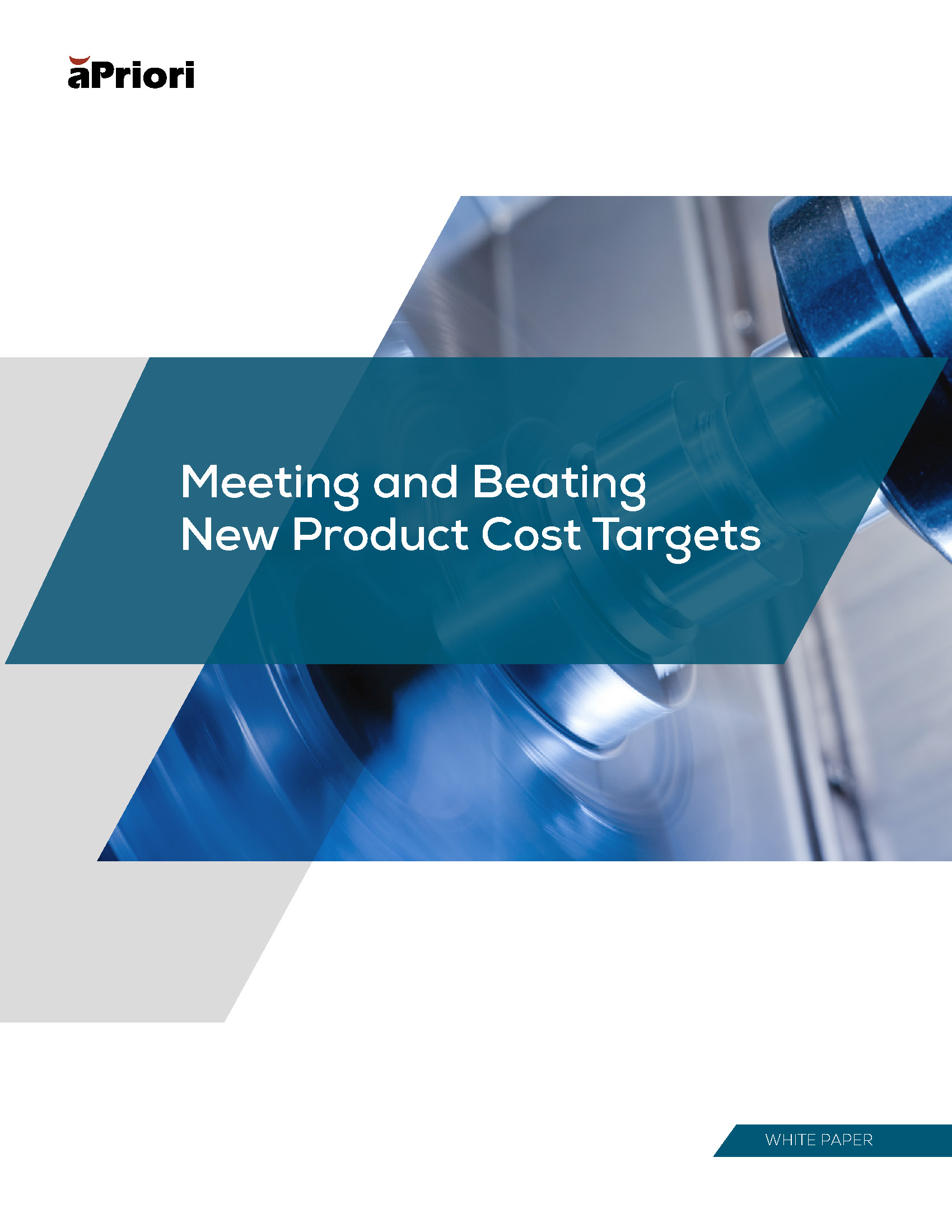Applying Change Management to Accelerate Time to Market
Key Takeaways:
- The change management process requires a well-executed plan to ensure success without impeding time to market
- AI-powered design and sourcing insights can facilitate more seamless execution while ensuring product manufacturability, profitability, and sustainability
The Full Article:
Organizational change is never easy – not for the employees or the management team. Moreover, such disruptions can impede productivity and time to market.
Gartner notes that, in 2022, the average employee experienced 10 planned enterprise changes. These changes often took the form of an organizational restructure or legacy technologies upgrade and were aimed at improving efficiencies, transforming the culture, and implementing new processes.
It also reveals that employees’ willingness to support enterprise change decreased to 43% in 2022, compared to 74% in 2016. The pandemic disrupted traditional work scenarios, organizational cultures, and organizational procedures. It also forced organizations to address labor shortages and supply chain issues, face an uncertain global and economic climate, and ramp up the digitalization of the workplace.
The latter provides an especially challenging task for change leaders – initiating and successfully launching digital technologies and aligning them with goals and processes. Gartner also indicates that 50% of change management initiatives fail. Just over one-third (34%) achieve categorical success. Often, those within the organization are resistant to change efforts. Although some may be excited about it, others may feel that it will increase their already heavy workloads. Fear of the unknown also creates trepidation.
Today’s Top Change Management Drivers
What are the main change management drivers for organizations today? They include:
- Data-driven technology: This driver is challenging for many organizations. A 2023 Capgemini change management study found that:
- Leaders who adopt data-driven approaches strengthen employees’ trust in the organization and thus increase change success by 23%.
- 86% of employee respondents said they felt they could influence change when working in a data-driven organization.
- Organizations that rely on comprehensive data analytics show a 24% higher commitment to a learning culture and are more successful in implementing change for this reason.
- Consumer demand/expectations: The pandemic turned organizations upside down in how they must react to consumer demand/expectations in order to remain viable. A McKinsey study finds a consistent pattern in the pandemic accelerating digital adoption that continues today, particularly in areas such as healthcare, to better meet customer demand.
- More competition: The first to market stands a better chance of capturing a larger share. Digital technologies, in combination with a comprehensive, actionable change management plan, can accelerate time to market and increase opportunities.
- Sustainability regulations: Manufacturers are facing increasing pressure from regulatory bodies, environmental groups, and consumers to become more sustainable. Reducing carbon emissions is an ambitious goal that requires precision, transparency, and audibility. It necessitates a solid change management process and digital solutions to lower carbon emissions without sacrificing profitability or time to market.
The Capgemini study also reveals that 54.7%, 25.7%, and 19.6% of respondents most recently experienced technological, organizational, and cultural changes.
Four Steps to Organizational Change Management (OCM)
So, how can organizations get there? Here are four essential steps:
- Define the Purpose: Understanding and clearly defining the purpose of your change management initiative is imperative. It should encompass the full scope and impact of the initiative via an Organizational Change Impact Analysis. Change impacts describe what is shifting between the current and future state of the organization, including its people, processes, and technology. It serves as the basis for identifying business readiness and change management activities for each key stakeholder group. Armed with that information, an organization can prioritize its change focus and definitively state how it will get from point A to point B via short-term and long-term goals. Change management certification can further facilitate this process.
- Incorporate a Governance Structure. This important step requires a well-organized team to oversee and support the initial change management strategy. This coalition should be comprised of those with deep institutional knowledge and expertise who wield influence within the organization. They should be firmly committed to excellence and to seeing the change management initiative to a successful implementation.
- Design for Impact: A defined purpose is only as good as the communication articulating and supporting it. Develop a communications plan. Additionally, identify targeted change interventions and mitigation activities through the Change Impact Analysis and the Change Readiness and Adoption Scorecard. Both measure and provide feedback at team and individual levels to drive results and continuous improvement.
Employees are crucial to a successful change management model. A structured approach that consistently engages and empowers them throughout the process will ensure success. Communicate the change management initiative’s timeline as well as its why (so they can get excited and invested) and how (so they understand their role and how to execute it). Provide clear, comprehensive direction and accessibility for questions or assistance in facilitating their roles in the process. Articulate how these changes will impact (hopefully from a positive perspective) their day-to-day workflows, what adoption success metrics will be used, and how non-adoption issues will be evaluated. It is essential to track adoption rates, and effective implementation of the change initiatives to ensure buy-in and that employees have a well-defined understanding of their role and expected outcomes.
Lastly, pay attention to how these change initiatives impact employees emotionally. Has morale dipped? Are you noticing any pushback or resistance (which can impede time to market)? Do you have a plan for dealing with them? Has individual or team member performance improved or decreased? Then, examine the reasons why. You cannot revisit these questions and restate the change purpose enough since not everyone will hear or get it (or want to) the first time around. Make sure to celebrate the small wins, too, so everyone stays motivated and achieves milestones via well-defined key performance indicators (KPIs).
- Develop Capabilities: Foster training methods that teach employees skills that enable effective job performance. Often, it involves a new product lifecycle management (PLM) environment to educate employees on specific process changes and familiarize them with the new system, including documentation and hands-on exercises for end-users.
AI-powered design and sourcing insights can ensure a more seamless change management transition. Moreover, product-centric companies face added pressure to iterate and innovate faster and better. Digital solutions support this new way of thinking and working while ensuring streamlined productivity, collaboration, and faster time to market. AI-powered design and sourcing insights enhance this process, allowing your product development teams to tweak products in faster, more innovative ways without having to reinvent the wheel each time. With better collaboration among all product development teams, there is greater accountability and a more vested interest in each project for all players.
The emphasis shouldn’t be on “change for change’s sake” but rather on a prime opportunity to participate, enhance professional development, and better the company. When employees are encouraged to embrace change and empowered to make a positive impact in that process, they are more likely to view “problems” through a different lens—a solutions-oriented one.
- Drive-Through Performance: Change management is not a “one-and-done” process. Ongoing support is necessary to ensure consistency and success. Create a consortium of executives, senior management, and super users to executive OCM activities. Super users will also serve as mentors to end users at each site to support training delivery. Define and track adoption and/or performance by using the Change Readiness and Adoption Scorecard.
Change Is Inevitable
Change is a constant in our lives. The sooner we embrace it, the faster we can effectively implement a change management program. AI-powered design and sourcing insights can support this effort more seamlessly and without impeding time to market.
Organizations that are efficiently navigating and leading change will be more resilient and better equipped to handle whatever disruptions and new competitors emerge.
What’s Impeding Your New Product Cost Targets?
Achieve new product manufacturability, cost targets, and time to market









